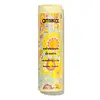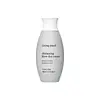What's inside
What's inside
 Key Ingredients
Key Ingredients

 Benefits
Benefits

 Concerns
Concerns

 Ingredients Side-by-side
Ingredients Side-by-side

Water
Skin ConditioningArnica Montana Flower Extract
MaskingPrunus Serotina Bark Extract
MaskingHippophae Rhamnoides Fruit/Seed Oil
AntimicrobialMyristyl Alcohol
EmollientGlycerin
HumectantEthylhexylglycerin
Skin ConditioningPEG-8 Distearate
EmulsifyingHydroxyethyl Behenamidopropyl Dimonium Chloride
PPG-2 Myristyl Ether Propionate
EmollientCinnamidopropyltrimonium Chloride
Phenyl Trimethicone
Skin ConditioningPolyacrylate-13
Polysorbate 20
EmulsifyingPolyisobutene
Caprylyl Glycol
EmollientSorbic Acid
PreservativePropylene Glycol
HumectantSorbitan Isostearate
EmulsifyingMicrocrystalline Wax
Emulsion StabilisingParaffin
PerfumingPhenoxyethanol
PreservativePolyethylene
AbrasiveParfum
MaskingBenzyl Benzoate
AntimicrobialHydroxycitronellal
PerfumingLimonene
PerfumingCitronellol
PerfumingCoumarin
PerfumingWater, Arnica Montana Flower Extract, Prunus Serotina Bark Extract, Hippophae Rhamnoides Fruit/Seed Oil, Myristyl Alcohol, Glycerin, Ethylhexylglycerin, PEG-8 Distearate, Hydroxyethyl Behenamidopropyl Dimonium Chloride, PPG-2 Myristyl Ether Propionate, Cinnamidopropyltrimonium Chloride, Phenyl Trimethicone, Polyacrylate-13, Polysorbate 20, Polyisobutene, Caprylyl Glycol, Sorbic Acid, Propylene Glycol, Sorbitan Isostearate, Microcrystalline Wax, Paraffin, Phenoxyethanol, Polyethylene, Parfum, Benzyl Benzoate, Hydroxycitronellal, Limonene, Citronellol, Coumarin
Water
Skin ConditioningPolyalkylaminoester-1
Hydrolyzed Corn Starch
HumectantPvp
Emulsion StabilisingPolyacrylate-13
Sodium Citrate
BufferingPhospholipids
Skin ConditioningPentylene Glycol
Skin ConditioningPropylene Glycol Dibenzoate
Skin ConditioningFructose
HumectantSodium Hyaluronate
HumectantGlycerin
HumectantMaltodextrin/Vp Copolymer
Myristyl Alcohol
EmollientPolyporus Umbellatus Extract
Skin ProtectingAmaranthus Caudatus Seed Extract
Skin ConditioningPolysorbate 20
EmulsifyingXanthan Gum
EmulsifyingPolyisobutene
PPG-2 Myristyl Ether Propionate
EmollientOleth-10
EmulsifyingParfum
MaskingHydroxyacetophenone
AntioxidantEthylhexylglycerin
Skin ConditioningLinalool
PerfumingCitronellol
PerfumingLimonene
PerfumingCitral
PerfumingWater, Polyalkylaminoester-1, Hydrolyzed Corn Starch, Pvp, Polyacrylate-13, Sodium Citrate, Phospholipids, Pentylene Glycol, Propylene Glycol Dibenzoate, Fructose, Sodium Hyaluronate, Glycerin, Maltodextrin/Vp Copolymer, Myristyl Alcohol, Polyporus Umbellatus Extract, Amaranthus Caudatus Seed Extract, Polysorbate 20, Xanthan Gum, Polyisobutene, PPG-2 Myristyl Ether Propionate, Oleth-10, Parfum, Hydroxyacetophenone, Ethylhexylglycerin, Linalool, Citronellol, Limonene, Citral
Ingredients Explained
These ingredients are found in both products.
Ingredients higher up in an ingredient list are typically present in a larger amount.
Citronellol is used to add fragrance/parfum to a product. It is often derived from plants such as roses. In fact, it can be found in many essential oils including geranium, lavender, neroli, and more. The scent of Citronellol is often described as "fresh, grassy, and citrus-like".
Since the Citronellol molecule is already unstable, Citronellol becomes irritating on the skin when exposed to air.
Citronellol is a modified terpene. Terpenes are unsaturated hydrocarbons found in plants. They make up the primary part of essential oils.
Citronellol is not able to be absorbed into deeper layers of the skin. It has low permeability,
Citronellol is also a natural insect repellent.
Learn more about CitronellolEthylhexylglycerin (we can't pronounce this either) is commonly used as a preservative and skin softener. It is derived from glyceryl.
You might see Ethylhexylglycerin often paired with other preservatives such as phenoxyethanol. Ethylhexylglycerin has been found to increase the effectiveness of these other preservatives.
Glycerin is already naturally found in your skin. It helps moisturize and protect your skin.
A study from 2016 found glycerin to be more effective as a humectant than AHAs and hyaluronic acid.
As a humectant, it helps the skin stay hydrated by pulling moisture to your skin. The low molecular weight of glycerin allows it to pull moisture into the deeper layers of your skin.
Hydrated skin improves your skin barrier; Your skin barrier helps protect against irritants and bacteria.
Glycerin has also been found to have antimicrobial and antiviral properties. Due to these properties, glycerin is often used in wound and burn treatments.
In cosmetics, glycerin is usually derived from plants such as soybean or palm. However, it can also be sourced from animals, such as tallow or animal fat.
This ingredient is organic, colorless, odorless, and non-toxic.
Glycerin is the name for this ingredient in American English. British English uses Glycerol/Glycerine.
Learn more about GlycerinLimonene is a fragrance that adds scent and taste to a formulation.
It's found in the peel oil of citrus fruits and other plants such as lavender and eucalyptus. The scent of limonene is generally described as "sweet citrus".
Limonene acts as an antioxidant, meaning it helps neutralize free radicals.
When exposed to air, oxidized limonene may sensitize the skin. Because of this, limonene is often avoided by people with sensitive skin.
The term 'fragrance' is not regulated in many countries. In many cases, it is up to the brand to define this term. For instance, many brands choose to label themselves as "fragrance-free" because they are not using synthetic fragrances. However, their products may still contain ingredients such as essential oils that are considered a fragrance.
Learn more about LimoneneMyristyl Alcohol is type of fatty alcohol. It is a white, waxy solid and insoluble in water.
As an emollient, it hydrates the skin by trapping moisture in.
Fatty Alcohols are most often used as an emollient or to thicken a product. They are usually derived from natural fats and oils and therefore do not have the same drying or irritating effect as solvent alcohols.
Learn more about Myristyl AlcoholParfum is a catch-all term for an ingredient or more that is used to give a scent to products.
Also called "fragrance", this ingredient can be a blend of hundreds of chemicals or plant oils. This means every product with "fragrance" or "parfum" in the ingredients list is a different mixture.
For instance, Habanolide is a proprietary trade name for a specific aroma chemical. When used as a fragrance ingredient in cosmetics, most aroma chemicals fall under the broad labeling category of “FRAGRANCE” or “PARFUM” according to EU and US regulations.
The term 'parfum' or 'fragrance' is not regulated in many countries. In many cases, it is up to the brand to define this term.
For instance, many brands choose to label themselves as "fragrance-free" because they are not using synthetic fragrances. However, their products may still contain ingredients such as essential oils that are considered a fragrance by INCI standards.
One example is Calendula flower extract. Calendula is an essential oil that still imparts a scent or 'fragrance'.
Depending on the blend, the ingredients in the mixture can cause allergies and sensitivities on the skin. Some ingredients that are known EU allergens include linalool and citronellol.
Parfum can also be used to mask or cover an unpleasant scent.
The bottom line is: not all fragrances/parfum/ingredients are created equally. If you are worried about fragrances, we recommend taking a closer look at an ingredient. And of course, we always recommend speaking with a professional.
Learn more about ParfumPolyacrylate-13 is a type of acrylate polymer. Acrylate polymers are commonly used as adhesives in cosmetics.
Polyacrylate-13 creates a film to protect the skin. It is also used to thicken and stabilize a product. It works by making water a gel-like consistency. This gel consistency helps suspend particles.
Polyacrylate-13 is a copolymer of acrylic acid, acrylamide, sodium acrylate, sodium acryloyldimethyltaurate monomers
Learn more about Polyacrylate-13Polyisobutene is a synthetic polymer made from isobutene.
It is a film-forming agent and helps bind ingredients together.
Polyisobutene is not absorbed by the skin.
Learn more about PolyisobutenePolysorbate 20 is made by combining ethoxylation of sorbitan, ethylene oxide, and lauric acid. It is a mild cleansing agent, surfactant, and emulsifier.
As a surfactant, it helps collect dirt and oils for washing. Emulsifiers prevent oils and water from separating.
Polysorbate 20 also adds scent to a product. Since it is made using sorbitol, it has a sweet scent. Sorbitol can also be found in fruits such as apples and peaches.
The lauric acid used to create Polysorbate 20 is often derived from coconuts.
Polysorbate 20 may not be fungal acne safe.
Learn more about Polysorbate 20This ingredient comes from propionic acid (a preservative) and myristyl alcohol (a fatty alcohol).
It is an emollient that leaves a dry texture on the skin. According to a manufacturer, this ingredient is non-occlusive.
The 2 stands for the number of repeating units of propylene glycol in the compound.
Chem/IUPAC: Poly[oxy(methyl-1,2-ethanediyl)], .alpha.-(1-oxopropyl)-.omega.-(tetradecyloxy)-
Learn more about PPG-2 Myristyl Ether PropionateWater. It's the most common cosmetic ingredient of all. You'll usually see it at the top of ingredient lists, meaning that it makes up the largest part of the product.
So why is it so popular? Water most often acts as a solvent - this means that it helps dissolve other ingredients into the formulation.
You'll also recognize water as that liquid we all need to stay alive. If you see this, drink a glass of water. Stay hydrated!
Learn more about Water